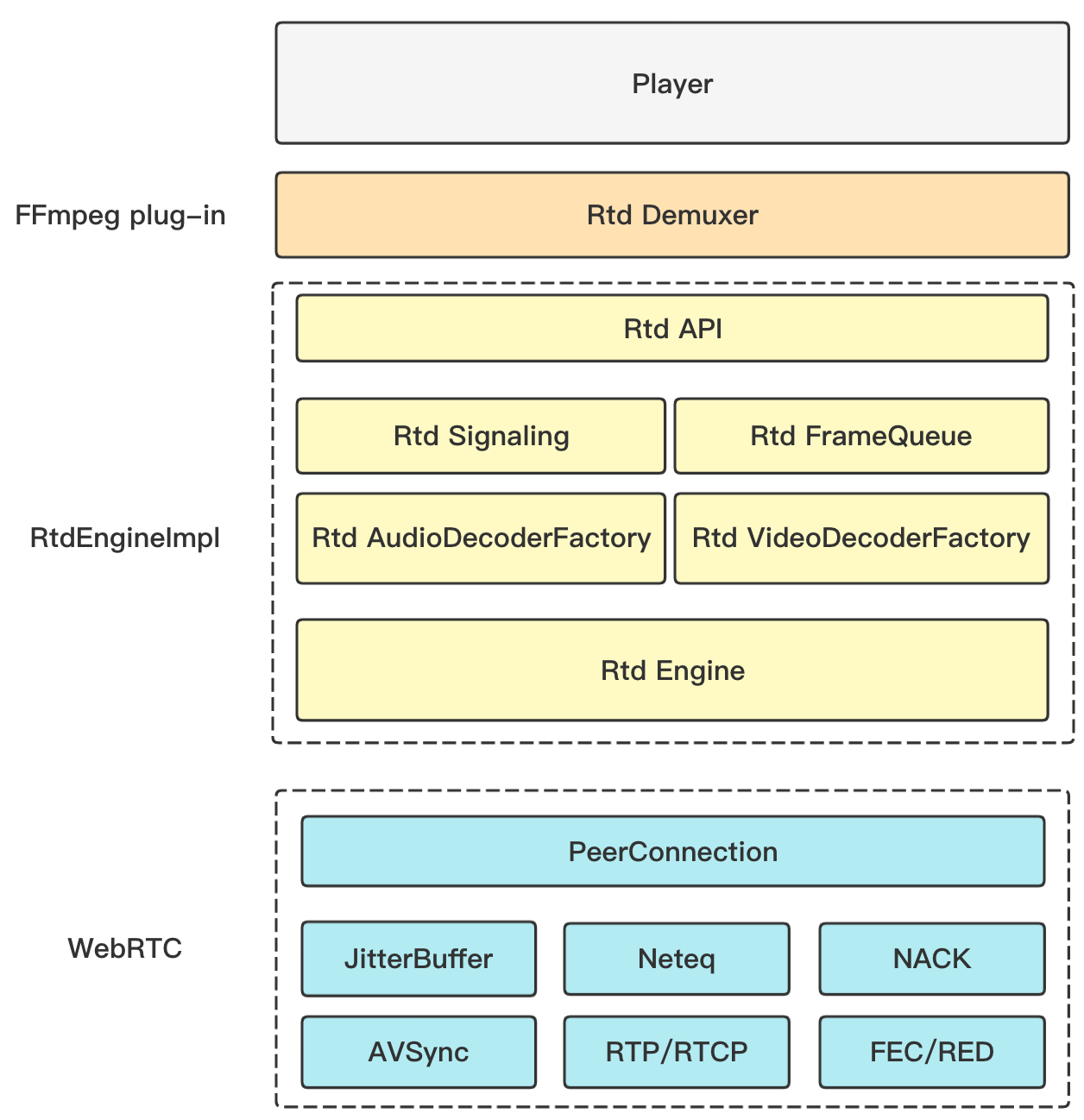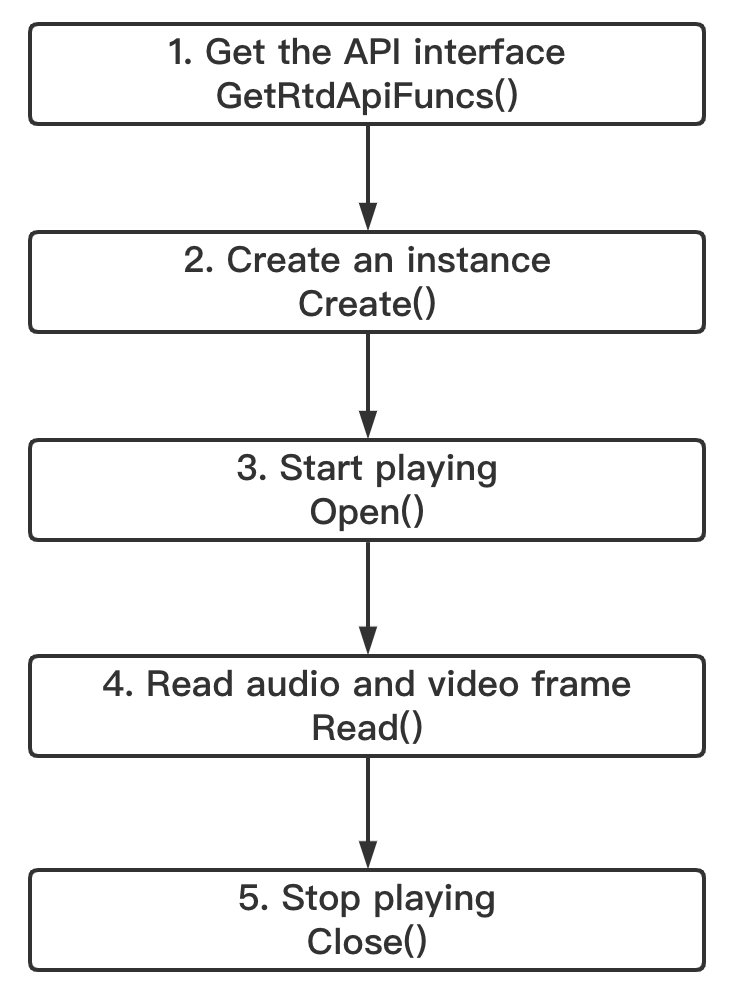A low-latency player SDK is implemented by GrowthEase based on WebRTC. Developers only need to access the SDK and make small changes to the player to have low-latency ability of live streaming.
The SDK provides a set of simple and easy-to-use interfaces, allowing developers to quickly integrate the low-latency live streaming function into existing players by calling the API of the SDK. At the same time, the SDK also encapsulates the API into a kind of FFmpeg plug-in, which is a type of FFmpeg demuxer. Developers only need to compile the SDK and FFmpeg plug-in source code into their own FFmpeg, and do not need to modify the player.By replacing the playback URL, you can directly reuse the original process to have low-latency playback capabilities.
- Low-latency pull streaming, and high anti-weak network performance
- Support OPUS and AAC, of which AAC supports ADTS and LATM, including AAC-LC, AAC-HE, AAC-HEv2
- Support H264
- Video callback H264 bit stream, audio callback PCM data
- Support Windows platform
The SDK is mainly divided into three modules:
-
FFmpeg plug-in: Rtd Demuxer
-
RtdEngineImpl: WebRTC encapsulation layer, including API、engine creation、signaling establishment、media data reception and callback, etc.
-
WebRTC: Media establishment、data reception、packet sequencing and framing, etc.

- FFmpeg plugin integration method
Directly put the src/rtd/ffmpeg/rtd_dec.c file and SDK dynamic library(rtd.dll) into FFmpeg and compile them together. The player does not need to be changed. Low-latency live streaming can be achieved simply by replacing the pull stream URL.
